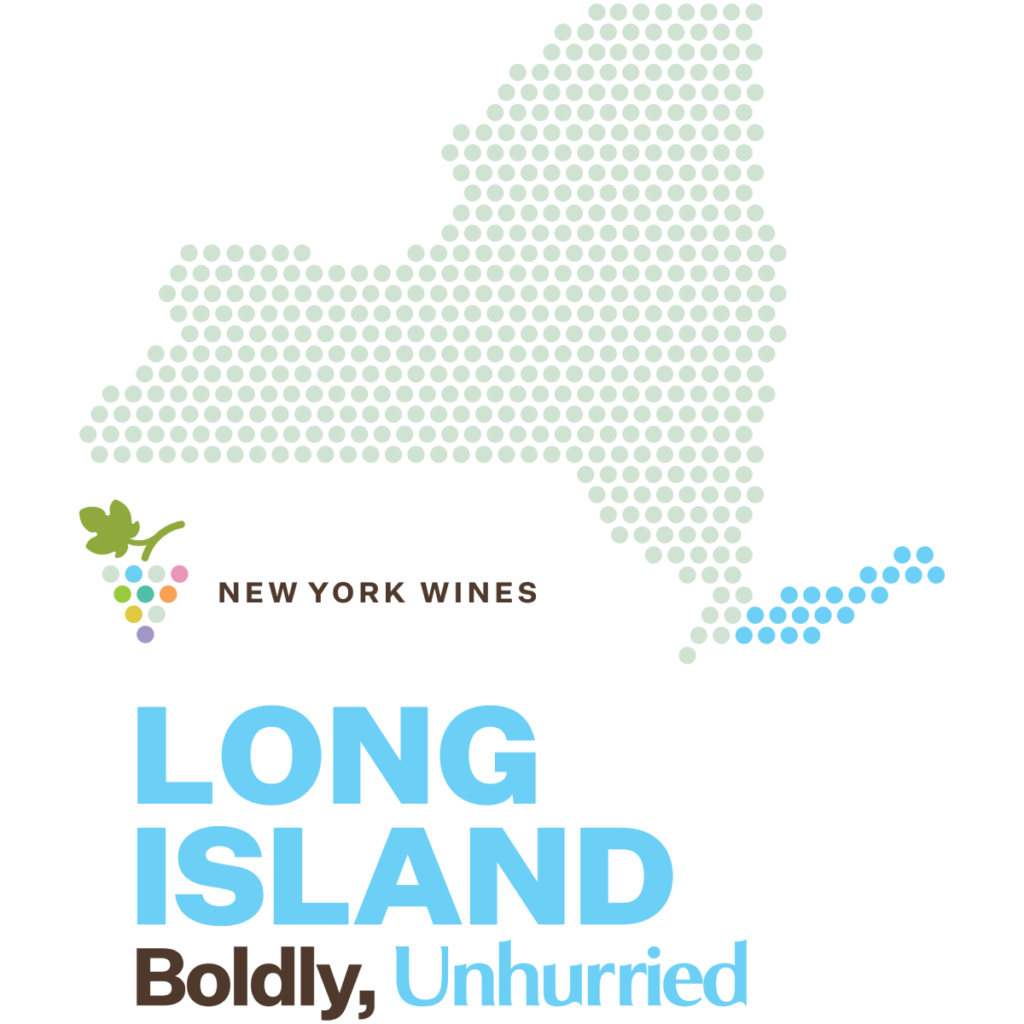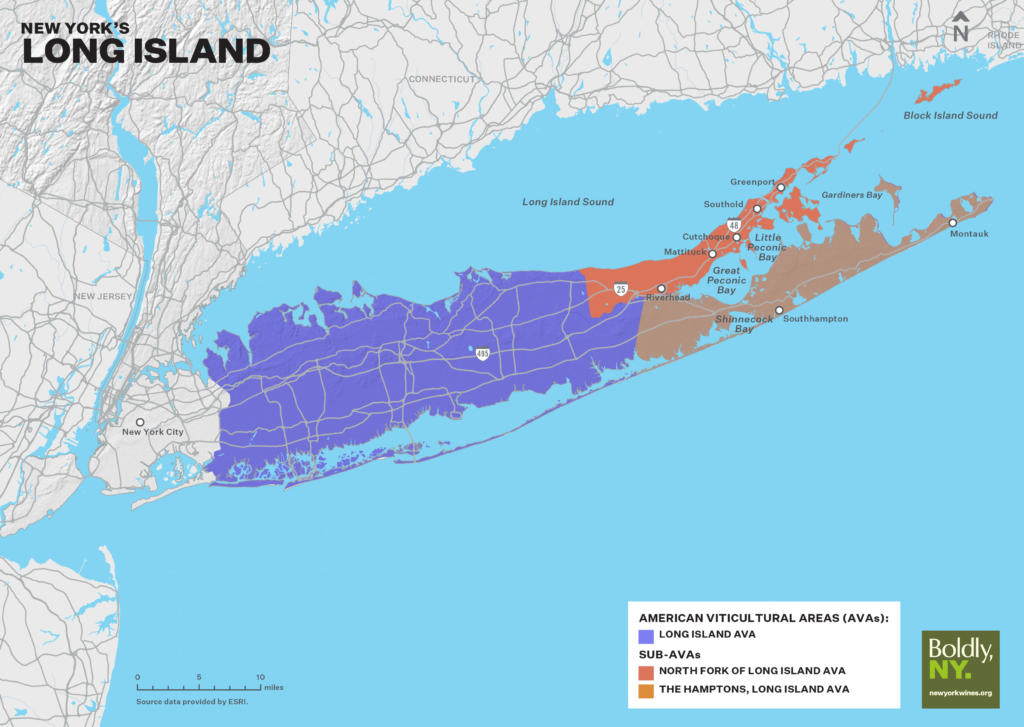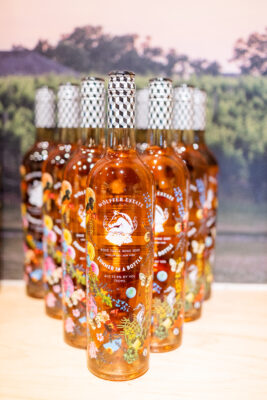
Long Island, the southeastern tip of New York State, is the largest island in the contiguous United States, stretching from the East River into the Atlantic Ocean and shouldered by the Long Island Sound. The Long Island AVA is the entirety of the two counties on the eastern part of the island—Nassau and Suffolk—with the majority of the wineries located in eastern Suffolk county.
The forks each have their own AVAs. The North Fork of Long Island AVA is protected from the Atlantic by the South Fork and Peconic Bay. It’s here where the first vineyards were planted in 1973. The Hamptons Long Island AVA lies on the South Fork, which has less protection and therefore fewer vineyards (but more celebrities!)
The climate of eastern Long Island is considered “mid-latitude maritime” and the grape growing conditions are strongly influenced by proximity to the ocean. Long Island winters are significantly milder than most of New York State, making the region desirable for growing the more cold-sensitive grapes varieties, such as Chardonnay, and Merlot, along with Bordeaux varieties and sparkling wines.
A bastion of experimentation, the sheer number of varieties planted and vinified with success in such close proximity is wild.
Geology
The landforms and soils of Long Island were formed by the advances and retreats of glaciers during the Ice Age, 21,000 years ago. Two great spines of glacial moraines, consisting of gravel and loose rock with outwash plains to the south, shape the key geomorphological features most relevant to vineyard growing circumstances.
The northern moraine, which directly abuts the North Shore at points, is known as the Harbor Hill moraine. Here the soil is deep, well-drained and ranges from nearly level to gently sloping, medium to moderately textured.
The more southerly moraine, known as the Ronkonkoma moraine, forms the backbone of Long Island; it runs primarily through the very center, roughly coinciding with the length of the Long Island Expressway. Here, the soil is rolling, excessively drained and course textured.
The land south of this moraine is the outwash plain of the last glacier. The glaciers melted and receded to the north, resulting in the difference between the rocky North Shore and the sandy South Shore.
Climate
The climate of Long Island features long hot summers with occasional thunderstorms, mild spring and fall seasons, and cool-to-cold winters with a mix of snow and rain.
Long Island winter temperatures are significantly milder than most of New York State.
The coldest month is January, when average temperatures range from 30°-35°, and the warmest month is July, when average temperatures range from 70°-80°. Daytime high temperatures on the eastern part of Long Island are cooler than the west on most occasions, due to the moderating effect of the Atlantic Ocean and Long Island Sound. In general, the North Fork has more sunshine than the South Fork and warmer temperatures earlier in the spring (due again to the effect of the Atlantic Ocean). Overall, the South Fork has cooler ripening weather, yielding wines that frequently may have lower pH and slightly higher acidity.
Precipitation is distributed fairly uniformly throughout the year, with approximately 3”-4″ on average during each month. Average yearly snowfall totals range from approximately 20″-35″, with the North Shore and western parts averaging more than the South Shore and the East End. Fog occurs on the South Fork, when moist, warm Atlantic air rising up the moraine encounters cooler air and a lower dew point.
The Cornell Cooperative Extension program for Suffolk County considers Long Island’s east end to have a maritime climate. It sees an extended period of frost-free days, a reduced range of diurnal and annual temperatures, a moderately sunny climate, averaging 2,400-2,800 hours of sunshine annually, and heavier precipitation in winter than summer. GDD averages 3,300 annually.

Quick Facts
About the Long Island Region
- Established May 15, 2001
- 82 Wineries
- 225 Day Growing Season
- 53 Farms, 1,815 Acres of Vineyard
- Vitis vinifera
Region map
Explore More New York Wine Country:



